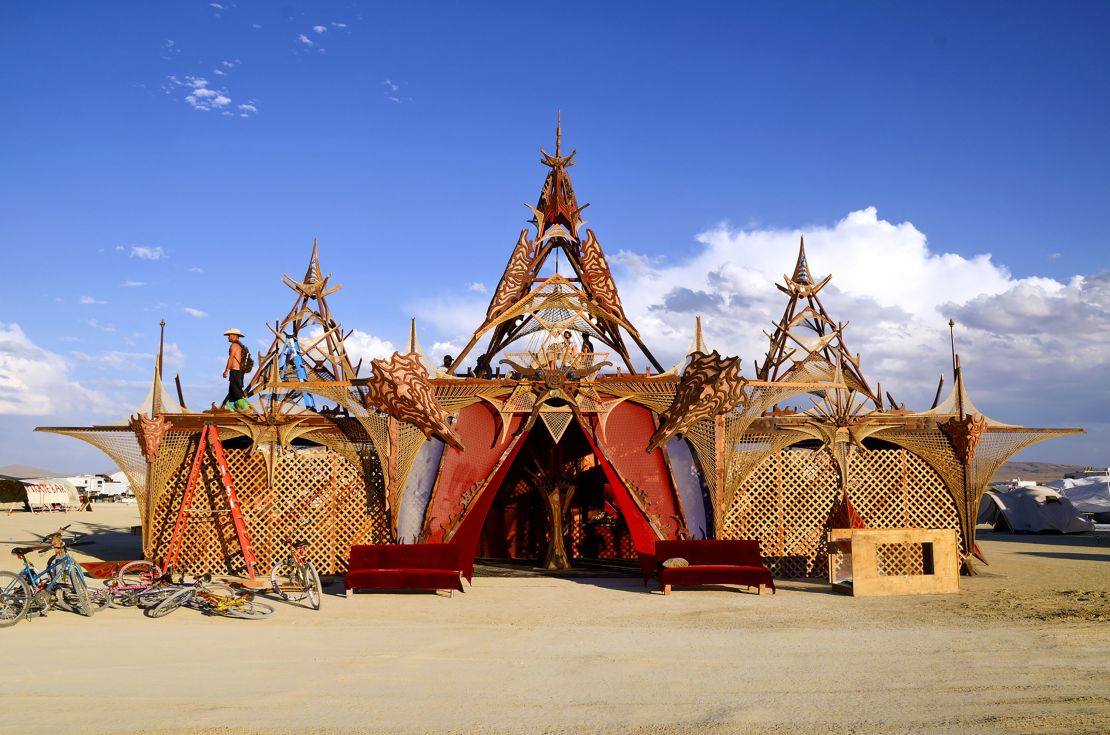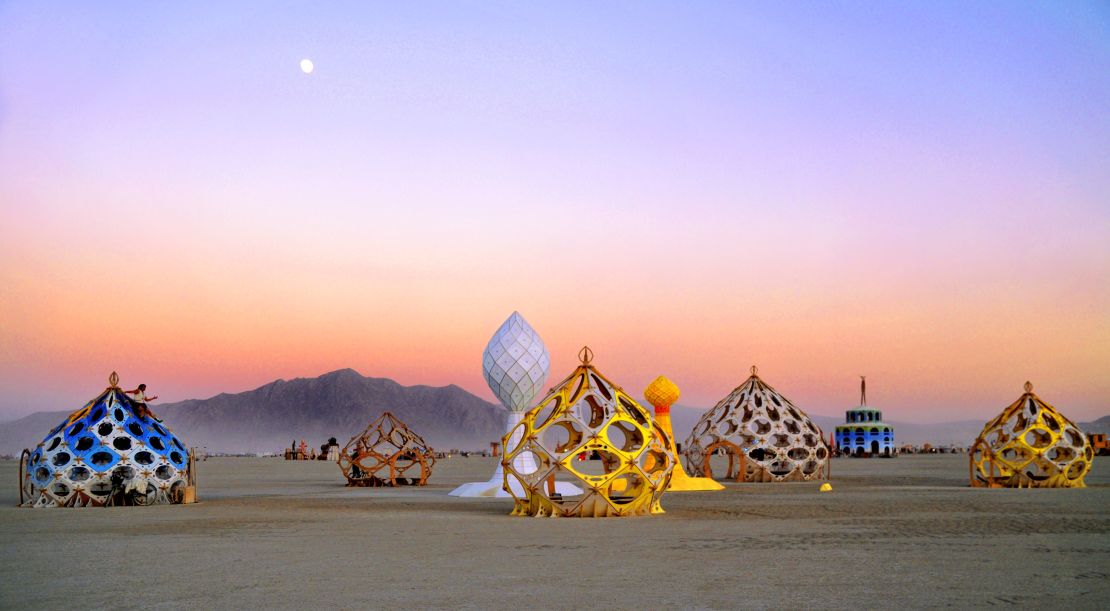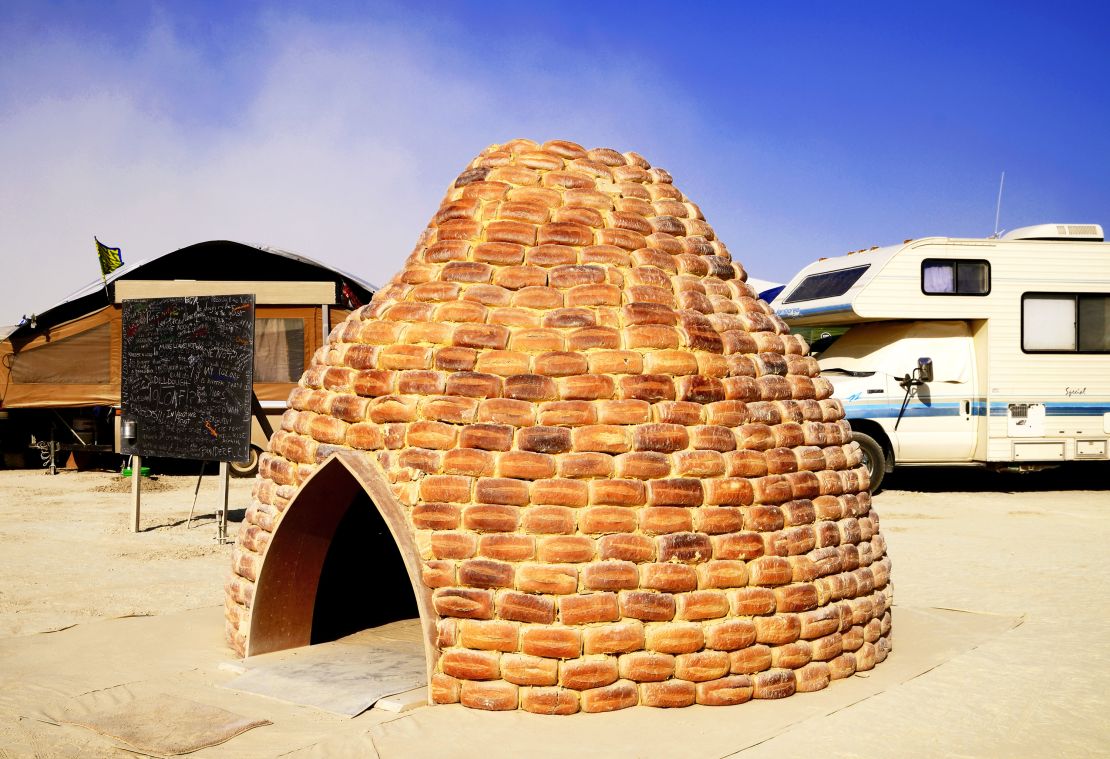Founded as a small gathering in San Francisco in 1986, Burning Man has evolved into what it advertises as “a temporary metropolis dedicated to art and community.”
These days, the annual festival attracts some 70,000 revelers who descend on the Black Rock Desert in Nevada.
Initially based on the bonfire ritual of the summer solstice, Burning Man has some strict rules. Goods and services can be gifted but not sold or bartered, for example, and there are no trash cans on site. A netted fence at the perimeter of the festival keeps windswept debris from escaping into the desert beyond.
But when it comes to where to sleep, creativity is encouraged and, in recent years, the festival has garnered press for the weird and wild architecture that inhabits the desert for one week only.
Photographer Philippe Glade has been attending the festival since 1996, and has documented the most inventive structures. In his latest book, “Black Rock City, NV: The Ephemeral Architecture of Burning Man,” Glade has brought together the most inspiring builds he’s come across in recent years.
From burning palaces to igloos made of bread, Glade has seen them all.
CNN: Why did you start taking photographs of the structures?
Philippe Glade: Having crossed the Sahara several times in 1990 and 1991, I thought I knew everything about desert living. Big mistake! In 1996, several hours after arriving at Burning Man, I realized that I was unprepared for the harshness of the desert.

I was without any shade and nothing to protect me from the very aggressive alkaline dust that dries out your fingertips and feet, and gets in your lungs. I began to note down what I needed to bring the following year. I was vexed by this unexpected, miserable situation of being unprepared.
The following year, I came a bit more prepared but still came short of real comfort. So, I decided that I should do like the locals and I started casually taking pictures of the surrounding camps.
At the time I was like every other photographer: far more focused on the art installation than the structures. After some years, having shared my images with the head of the art department of Burning Man, I decided to focus on the fabric of this temporary city and document its diverse shelters, all the while still looking for something myself.

CNN: What about the buildings at Burning Man amazes you?
PG: The thinking behind them, the constant tweaking, the sheer effort put in by regular people and city slickers to create a unique design to make their neighborhood special – just for one week. Much like the Rio carnival designers, camp-builders think and test parts and structures all year long because a failure could be catastrophic.
CNN: Who are the people that are building these structures?
PG: They come from all walks of life, ingenious city slackers, your resourceful average Joe, aerospace engineers, architecture students, designers, construction workers. The Black Rock Desert is a large canvas to challenge men and women to create fast and sustainable shelters in any shapes possible.
CNN: Do you think the innovation shown by the architects at Burning Man could give us an insight into the future of architecture in some way?
PG: Because of the transient nature of the festival and its remoteness, without any direct access to hardware stores, architects, designers and builders must carefully plan in advance the process of building and erecting the structures. Gear must be well-stocked with spares and all the tools necessary for the construction.
So the main goal is to have very light components that will flat-pack and can be assembled by non-specialists as fast as possible because of the harsh environment.
Designers are looking to inflatable structures, aluminum nodes, domes made of one size struts, pre-cut elements to prevent on site pollution.
The ultimate goal of these designers is to create shelters that could be easily implemented in disaster-stricken zones around the world for a low cost.

CNN: What is it like watching the buildings being dismantled after the festival?
PG: It’s always a feeling of sadness and loss. A new landscape can appear again, the entire neighborhood shifts. Sometimes this dismantling happens really fast all around you, which can be disorienting after you got used to it for one week and suddenly, in a matter of hours, the landscape, the cityscape is shrinking to nothing. It’s disorienting and mood-altering.
CNN: What is the most unusual building you have seen at Burning Man?
PG: The loaf shelter made of 850 loaves of bread.
“Black Rock City, NV: The Ephemeral Architecture of Burning Man” by Philippe Glade, published by Real Paper Books, is out now.












